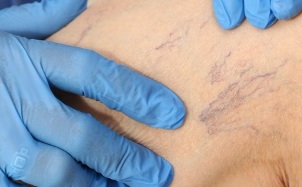
Varicose veins are characterized by the expansion of the uneven lumen of the leg veins, the appearance of varicose veins in them and the increase in length. The disease develops gradually, characterized by a chronic course.
Women suffer from varicose veins three times more often than men. And among the stronger sex representatives, people who love sports with a maximum load distribution on their feet are prone to the disease: football, tennis, basketball.
Why varicose veins occur
There are three types of veins in leg tissue: superficial, deep, superficial and deep veins. Each vein is a hollow tube through which blood flows from the tissues of the feet to the heart. There are no muscle cells in the venous wall, so the veins cannot contract to push the blood up. This task is performed by the skeletal muscles. And the valve is located inside the vein - they close the valve at the time of contraction of the skeletal muscle, preventing blood flow. Each muscle contraction "pushes" the blood higher.
When the valve cover does not close tightly, part of the blood flows back, trapped in the vein, pressing against its wall, gradually stretching it. Lumen veins expand, the walls are stretched. This is the beginning of varicose veins.
Disease factors:
- Hereditary - with a lack of congenital collagen fibers, venous walls are less elastic and tend to stretch.
- Stagnation of blood in the veins of the legs with excess weight and obesity, wearing shoes with heels more than 3-4 centimeters, with a prolonged position in one place of people of certain professions - hairdressers and salesmen, cooks, lecturers, or withsat long in the office.
- Changes in hormone levels: an increase in the progesterone content in a pregnant woman's blood makes her walls soft and expandable, so that the risk of varicose veins during pregnancy increases dramatically.
The first sign of varicose veins - how not to miss
The moment when a spider vein or spider vein - the reticular varicose vein - appears on the skin of the foot, is thought to be an alarm signal about a newly started varicose vein. This is not a cosmetic defect, but the beginning of a disease!
Simultaneously or after a while, the second set of signs joins - a feeling of heaviness in the legs, spread in the legs after a long standing or sitting in a chair. When a person begins to walk, the feeling of heaviness decreases: the skeletal muscle pushes the stagnant blood higher and the stretching of the venous wall decreases.
Further development of the disease is indicated by edema on the feet - this is a sign of socks, thickening of one foot compared to the other foot during visual examination.Later, pain in the calf muscles, rapid fatigue during walking, merging with dry skin of the feet and their pigmentation, protrusion of varicose veins and the formation of trophic ulcers.
When to see a vascular surgeon?
When the spider veins and asterisks first appear, you should see a specialist, and, if necessary, perform an ultrasound examination of the veins in the lower leg and perform varicose vein surgery. The earlier the diagnosis of varicose veins is made, the more likely it is to stop at an early stage.




































